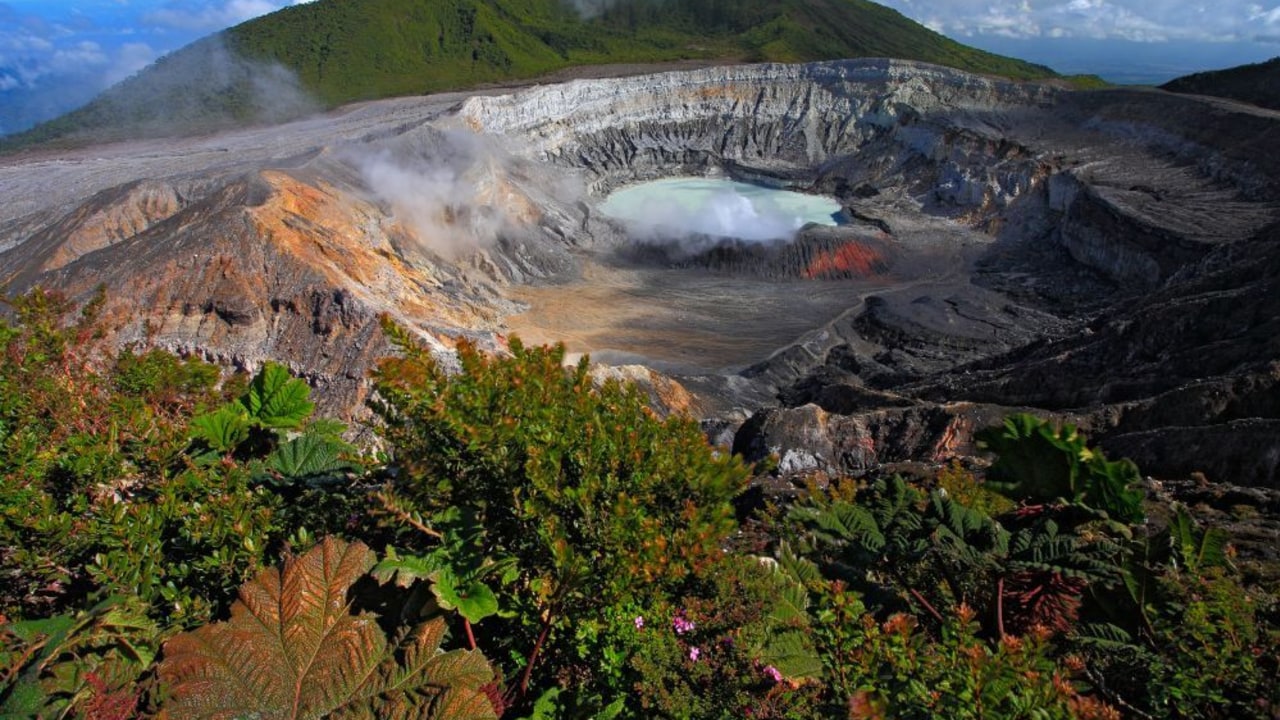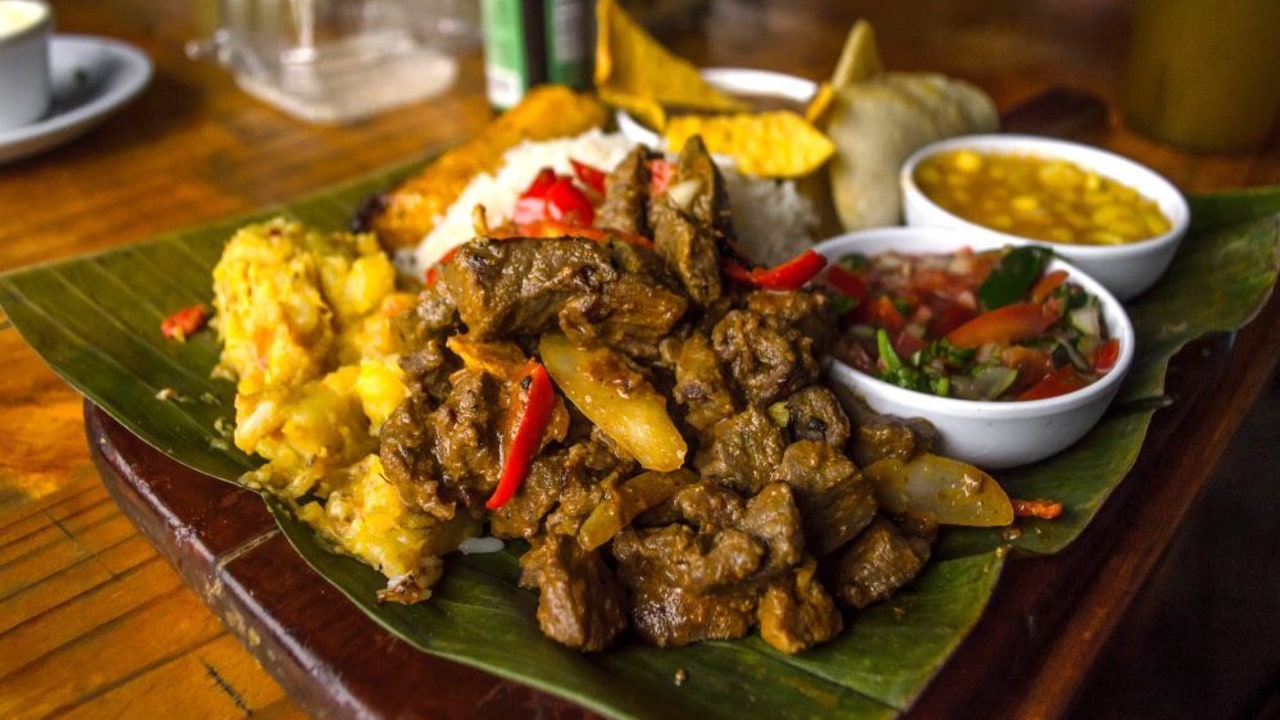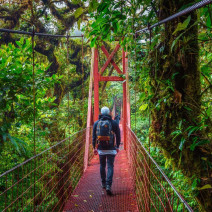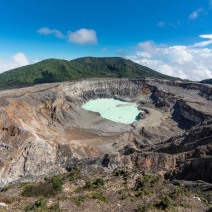Costa Rica Travel Guide
Costa Rica is a land of extraordinary natural beauty, offering an impressive mix of lush rainforests, volcanic landscapes, pristine beaches, and vibrant cultural traditions. Situated in Central America between Nicaragua and Panama, the country has a population of approximately 5.1 million, with San José as its capital and largest city. Spanish is the official language, though English is commonly spoken in tourist areas.
Since abolishing its army in 1948, Costa Rica has become known for its political stability and long-standing commitment to peace. Around 26% of its territory is dedicated to national parks and protected reserves, making it one of the most environmentally progressive countries in the world. This strong focus on conservation has helped establish tourism as a major part of the economy, attracting visitors from around the world.
There’s plenty to discover, including world-renowned coffee plantations in the Central Valley, the cloud forests of Monteverde, and the active volcanoes of Arenal and Poás. Visitors can also enjoy the Pacific coast’s beaches, which are popular for both relaxation and water activities. As one of the most biodiverse countries on the planet, Costa Rica is home to species such as sloths, toucans, sea turtles, and whales — all observable in their natural habitats.
We’ve outlined some general information that may be helpful to you when planning your next holiday to Costa Rica.

Time Zone & Currency in Costa Rica
Costa Rica is 6 hours behind Greenwich Mean Time and the currency is the Colón (CRC)

Weather in Costa Rica
Costa Rica has a tropical climate with two seasons: dry season and rainy. The dry season, Summer, spans from early December to April. The other season Winter, which lasts from May to November.

Reading For Your Trip To Costa Rica
The Green Republic by Sterling Evans
Monkeys Are Made of Chocolate by Jack Ewing
Costa Rica: A Traveler’s Literary Companion edited by Barbara Ras

Best time to go to Costa Rica
Costa Rica is a fantastic destination to visit year-round, thanks to its diverse microclimates and natural beauty. We travel in October and November, when the country is at its greenest and waterfalls and forests are especially vibrant. The Pacific coast begins to transition into its dry season, making it a pleasant time for outdoor exploration, while the central highlands, including San José and Monteverde, enjoy cooler, refreshing weather. These months are excellent for sightseeing, wildlife encounters, and enjoying Costa Rica’s top attractions.
Top Tourist Attractions In Costa Rica

Food and drink in Costa Rica
Costa Rican cuisine is simple, wholesome, and full of flavour, with a strong emphasis on fresh, local ingredients. Some must-try dishes include:
- Gallo Pinto: A traditional breakfast dish of rice and black beans, often served with eggs, cheese, and plantains.
- Casado: A hearty plate featuring rice, beans, salad, plantains, and a choice of meat, chicken, fish, or vegetarian options.
- Sopa Negra: A comforting black bean soup, usually served with hard-boiled eggs and fresh coriander.
- Olla de Carne: A rich beef stew with root vegetables like yucca, carrots, and plantains.
- Chifrijo: A popular bar snack of rice, beans, fried pork, and pico de gallo, often enjoyed with tortilla chips.
- Patacones: Twice-fried green plantains, crispy on the outside and soft inside, served with beans or guacamole.
Costa Rica is famous for its coffee, and it’s usual to end a meal with a small cup. The country also has several local brands of lager, while refreshing soft drinks like agua de sapo (ginger, lime, and sugarcane) and fresh tropical fruit juices are popular non-alcoholic choices.
Costa Rica Travel Guide FAQs
Can you give a brief history of Costa Rica?
Costa Rica’s history begins with advanced Indigenous cultures, including the Chorotega, Huetar, and Bribri peoples, who developed agricultural systems, stonework, and trade routes linking Central and South America. Spanish explorers arrived in the early 16th century, and the region became part of the Captaincy General of Guatemala under Spanish colonial rule. Unlike other colonies, Costa Rica was relatively isolated and poorer, which helped foster a tradition of small-scale farming and a strong sense of community. Costa Rica declared independence from Spain in 1821, initially joining the Federal Republic of Central America before becoming a fully sovereign nation in 1838. In 1948, following a short civil conflict, the country abolished its army, enshrining peace and democracy at the heart of its national identity. Since then, Costa Rica has invested heavily in education, healthcare, and environmental protection. Today, Costa Rica is one of the most stable democracies in Latin America and a pioneer in conservation, with over a quarter of its land protected as national parks or reserves. It is celebrated worldwide for its biodiversity, eco-tourism, coffee production, and reputation as a peaceful, welcoming nation.
Do I need a holiday visa for Costa Rica?
If you are a citizen of the EU or the United Kingdom and hold an EU or British passport there are no other requirements for entry other than having a valid passport with at least 6 months validity for entering Costa Rica. Please be aware that you may transit through countries that require a visa for entry. Please check your eligibility and ensure all relevant visas are obtained, should they be required.
Do I need any vaccinations to travel to Costa Rica?
We recommend reviewing the latest travel health advice and consulting your GP or a travel clinic well in advance of your trip. They can provide guidance on any vaccinations or preventative measures that may be advised for Costa Rica, depending on your personal health and travel plans.
Is eating out in restaurants expensive in Costa Rica?
Eating out in Costa Rica may cost more than you expect. Main dishes start at around $10/€10 in San Jose and can be double that in popular coastal towns. Sodas are small restaurants that serve traditional Costa Rican cuisine. Sodas are a great way to experience local food and culture of Costa Rica. As Costa Ricans tend to start the day early, they are less likely to hang about late in restaurants in the evening, and establishments are usually empty or closed by 10pm.
Is Costa Rica safe?
The places included in your itinerary are generally safe, and our guides will always be attentive to your wellbeing. That said, as in any large city, opportunists and pickpockets can be present. We recommend staying alert in busy tourist areas and keeping your personal belongings secure. Use the safe provided at your hotel, and when out and about, carry a photocopy of your passport rather than the original. Extra care should be taken when using public transport. As in many countries, some crime may be directed towards wealthier visitors, so it is best to avoid displaying expensive items or valuables openly.
Costa Rica Travel Advice
- For up-to-date information regarding entry into Costa please see: www.gov.uk
- Official Costa Rica Tourism Board: www.visitcostarica.com









